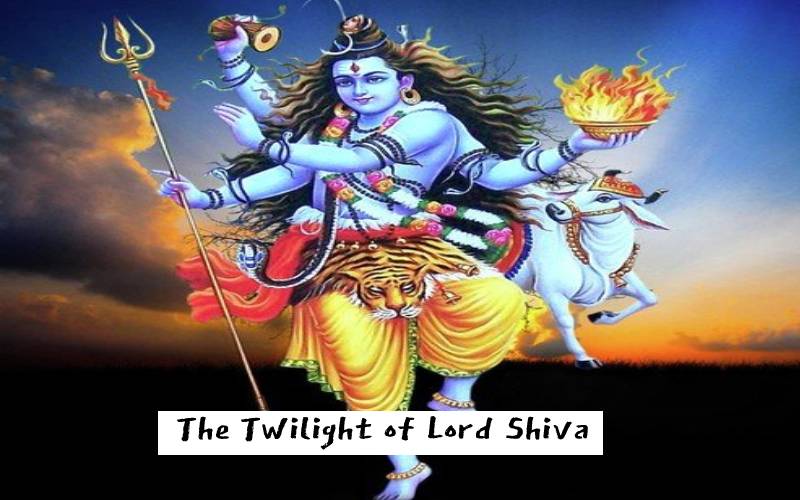
Divine Occasion of Pradosham
Pradosham or Pradosha is closely connected with the worship of Lord Shiva. It is observed every fortnight on the thirteenth day of the Hindu calendar. This auspicious three hours begin one and half hours before the sunset. The devotees are found to wear rudraksha beads, vibhuthi, dhoti/saree and worship Shiva by performing an abhishekam with pure and natural ingredients. Water, milk, curd, honey, sandalwood paste, panneer (Rose water), tender coconut, panchamritham (A mixture made out of natural sugar and fruits), etc., are offered to the Shiva Lingam and Nandhi. Strands of Vilvam (Bhel), Sambraani (Benzoin) will normally be used to decorate the deity after the holy bath. Naivedyam consisting of sweets, sundal and flavored rice would then be offered to the Lord. This is followed by an elaborate Aarati.
The days from the new moon to the full moon is known as Shukla Paksha and the following period of waxing of the moon is known as Krishna Paksha. Pradosham is the time when the thirteenth day (Trayodashi) of the fortnight meets the end of twelfth day (Dwadashi). Now, let us look at the etymology of Pradosha. Pradosha is the son of Kalpa and Dosha. His two brothers are Nishita and Vyustha. The three names mean, the beginning, the midday and the end of a day.
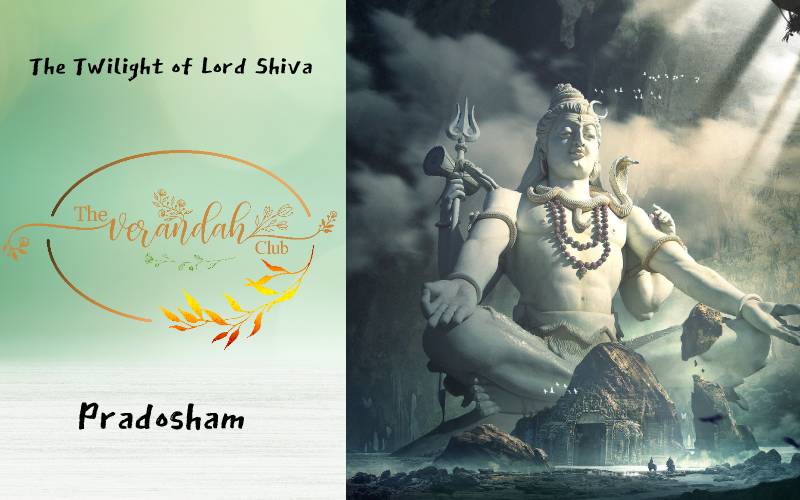
Once upon a time, the devas propitiated Lord Shiva at the time of pradosham. This was done by them in order to get relief from Daityaa-s (Demons). They ran around Kailasa under the guidance of Lord Shiva’s mount Nandhi and the good Lord eliminated the daithyaa-s. It was from this time that the practice of worshipping Shiva along with Nandhi began. Several steps are followed during pradosham. The Utsava Moorthy (Processional Idol) of Vrishabharooda Umamaheshwara (Shiva and Parvathi seated on the sacred bull Nandhi) is taken around the temple.
The Pradosha Vrata includes a fast and a bath is taken before worshipping the deities, Shiva, Parvathi, Ganesha, Karthikeya, and Nandhi. The story of Pradosha is read out after the formal worship. Mahapradosham is the day which falls before or at the time of Mahashivaraatri (The Night of Shiva). Somapradosham is the one which comes on a Monday, while the shanipradosham falls on a Saturday. Ardent devotees of Lord Shiva try to celebrate 108 Pradosham-s without any interruption. A special pooja is done thereafter. Setty S. N. Padmanabha Chetty of Salem had observed the 108 Pradosham-s in the above-mentioned manner.
Shanipradosham relates to Shanigraha (Planet Saturn) and is closely associated with the Ujjaini Mahakaleshwarar Temple. Ujjain was known as Avanthika and was a famous devotional epicenter. Large number of students would hassle to Ujjain and learnt several holy scriptures.
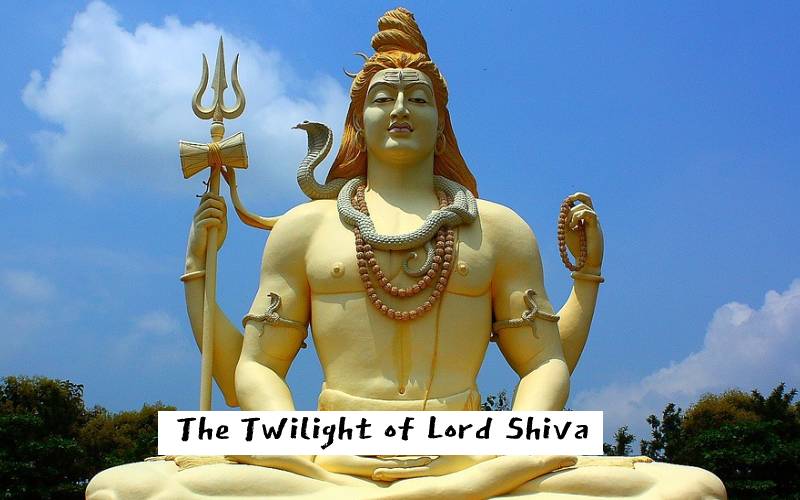
Ujjain was ruled by the pious King Chandra Sen and his celestial gem could create miracles. Rival rulers, Ripu Daman and Singh Aditya decided to attack Chandra Sen and take over the treasure. King Chandra Sen was unaware of all these and was chanting the name of Lord Shiva. This attracted the attention of a farmer’s boy named Srikar, but the God’s sent him to the outskirts of the city near River Kshipra.
Srikar continued to pray, and the information reached the priest named Vridhi. He was shocked to hear about this and due to the pleas of his son, he began to pray to Lord Shiva from the Kshipra River. Enemies attacked him on a Saturday which happened to be a Trayodashi. They were aided by the Asura Dooshan who was blessed by Brahma to be invisible. The evil forces plundered the city and on hearing the pleas of his devotees, Lord Shiva appeared in the form of Mahakaal (Form of light) and destroyed the marauders. Later, his devotees Srikar and Vridhi requested him to stay as the chief deity of the Ujjain. From that day on, the Lord decided to stay as Mahakaal in the form of a Swayambhu Linga (Self-manifested) at Ujjain. It is far more than a faith that people worshipping Shiva on shanipradosham would be free from the fear of death and diseases. They would also be blessed with worldly treasures.
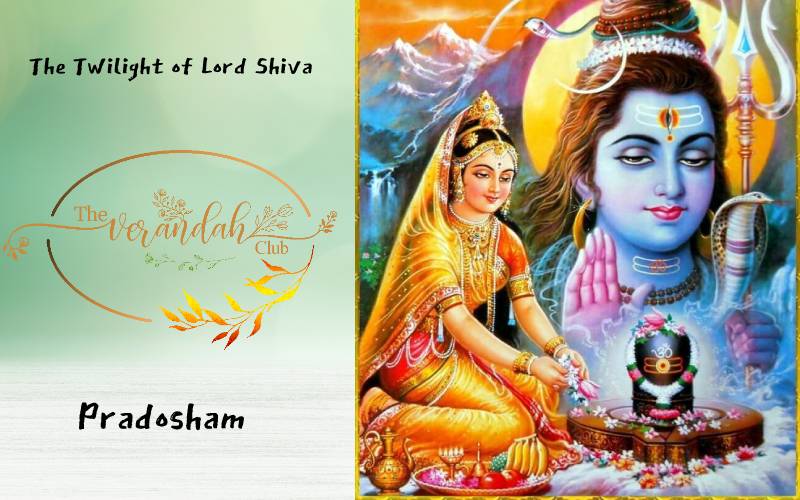
There is yet one more legend connected with pradosham. The devas took the help of the asuraas to churn for amritha, the elixir, which would grant immortality. The churning process threw up a deadly poison known as halahal and this poison began to destroy all the living beings in the universe. A compassionate Shiva collected the poison and began to consume it. Devi Parvathi rushed towards her consort and blocked the poison from going beyond his neck by wrapping her palms around. She had done so to protect the vast universe that was contained in the Lord. A portion of Lord Shiva’s neck turned blue because of the poison, henceforth he came to be known as Neelakanta (The blue-necked one).
The celestial beings continued to churn the milk ocean and Lord Dhanvantri emerged with the nectar of immortality on an ekadashi which was consumed by the deva-s on dwadashi. The deva-s became blissful and began to celebrate. At that moment, they were suddenly reminded of Lord Shiva and Devi Parvathi. They then realized that they had erred for not having remembered them. Therefore, they decided to thank their lordships by offering a special pooja at that very moment. This is now being observed as pradosham.
Nowadays, the temples around the world celebrate pradosham regularly and huge numbers of devotees throng the shrines to seek the grace of Lord Neelakanta.
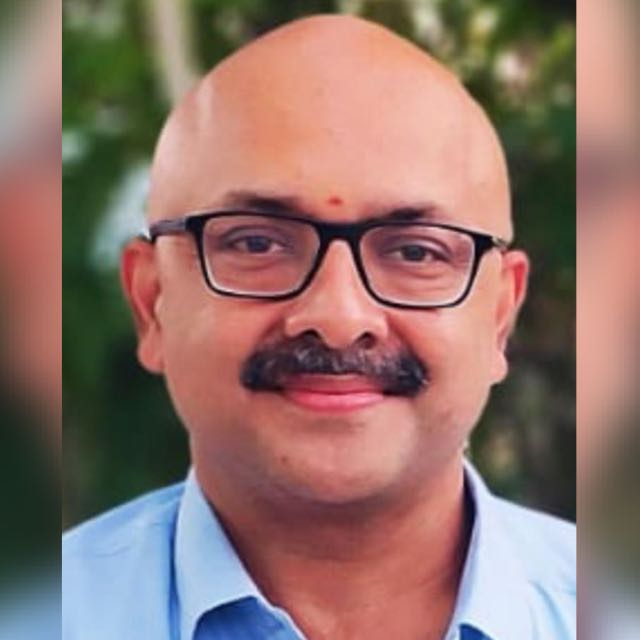
Mr. Rajesh Govindarajulu is one of the founding members of the Verandah Club Pvt. Ltd. He is a leading columnist, historian, jeweler, entrepreneur, and a heritage enthusiast who is earnestly working to revive the past in the light of the present. Experiential learning about the history of Coimbatore is his main course of interest and he is also a panel member of many colleges in the city.
NEXT ARTICLE

Subramania Bharati, often referred to as Mahakavi Bharati (Great Poet Bharati), was a revolutionary poet, journalist, and social reformer whose words...
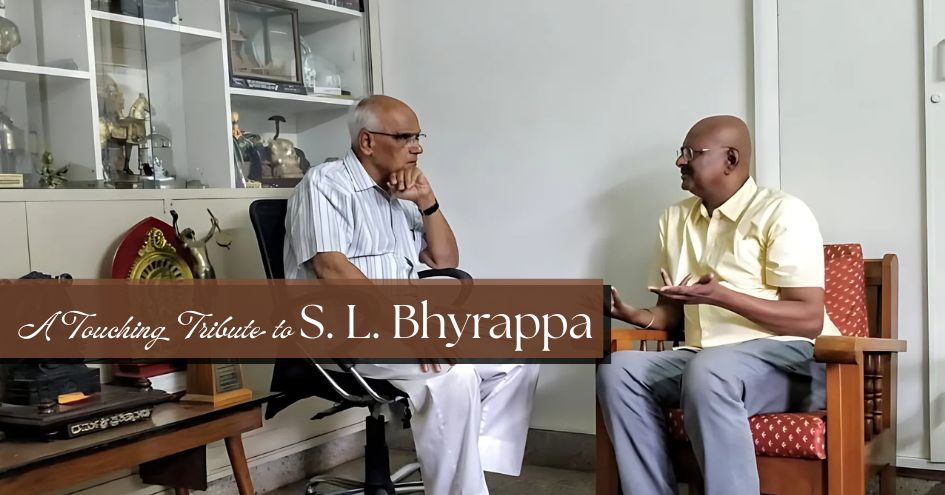
Some writers tell stories, and then there are those rare souls who hold up a mirror to our civilisation, our history, and our innermost selves. Sri Sa...